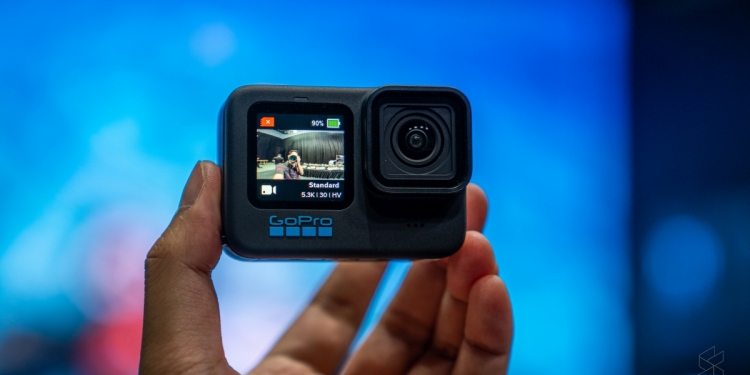As a GoPro Hero 10 user myself, I was initially unimpressed when I saw the company launch their brand new Hero 11 camera. It looked the same, felt the same and even had the same processor.
I mean, sure it can do 5.3k at 60fps now, but who’s really shooting at that resolution? But, earlier this month I had the chance to try it out in person and I gotta say, there’s one particular tweak here that isn’t insignificant.
I’m not going to go over all the shooting resolutions and stuff, so if you want to know about that, you can read our launch post. What you should know is that despite its many similarities with Hero 10, Hero 11 now comes with a slightly taller sensor. Although this looks kinda meh on paper, the capability it unlocks is interesting.
For starters, the camera can now shoot in an 8:7 aspect ratio which is actually noticeably taller than the max 4:3 that you’re able to do with a Hero 10. The benefit here is that with a single shot, you now have more freedom to crop for both portrait and landscape video. So let’s say you only get one
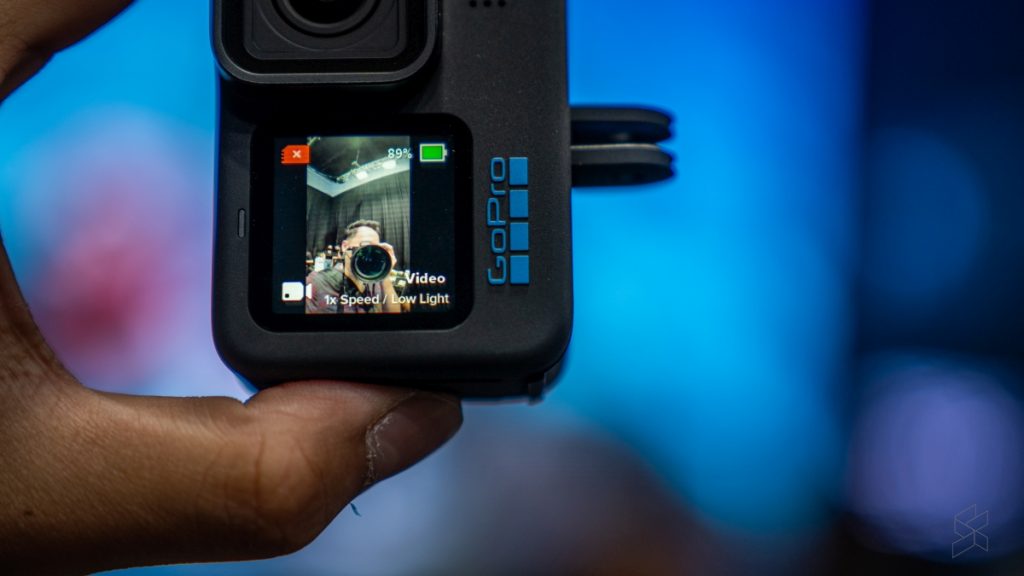
shot to not miss your chance, you can shoot that single take and crop it in post to fit both TikTok and YouTube. And as you can see from the side-by-side with my Hero 10, the extra headroom is absolutely significant.
While it may not seem like a big deal to be able to do this, because you can just do another take on a regular camera, you have to remember what the GoPro is designed to do. The high intensity action sequences or stunts that this tiny camera is designed to do may only have one take, so being able to even easily shoot for both can make a difference.
There are limitations with shooting in this mode. For starters, you only get access to regular HyperBoost, and you lose the option to swap between focal lengths. The good news is that resolution doesn’t seem to be affected so overall I think it’s still a great feature to have.
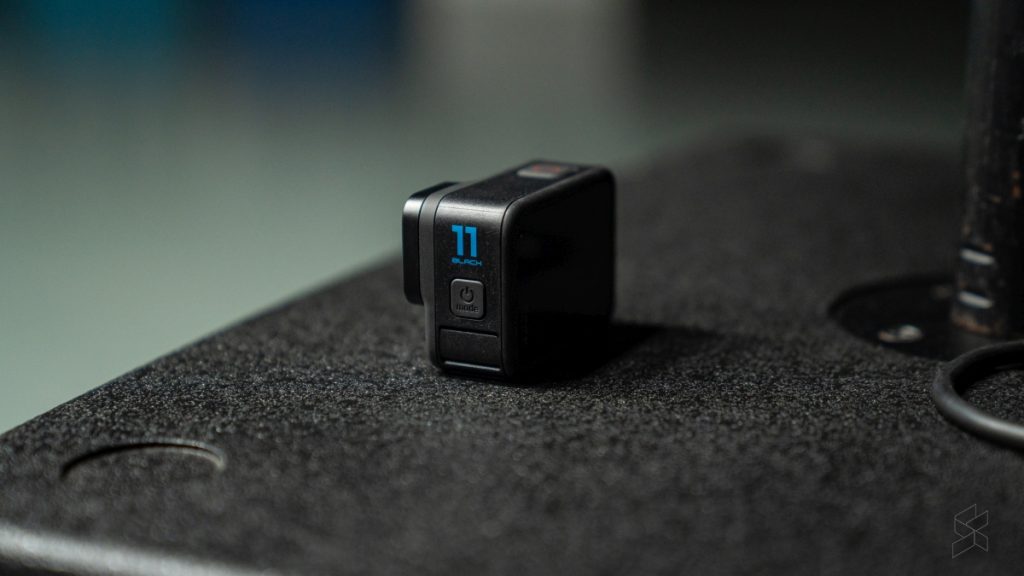
That being said, the 16:9 equivalent in camera HyperView feature that GoPro is also introducing has the opposite effect. I was mighty impressed when I saw it in the promo video, but in my brief test it seems at times like a worse version of SuperView.
It is definitely wider than SuperView, but what I think they’ve done to achieve this is basically take that extra data from the taller sensor and smushed it into a 16:9 aspect ratio so you end up with a very distorted image at the edges of the frame—even compared to SuperView.
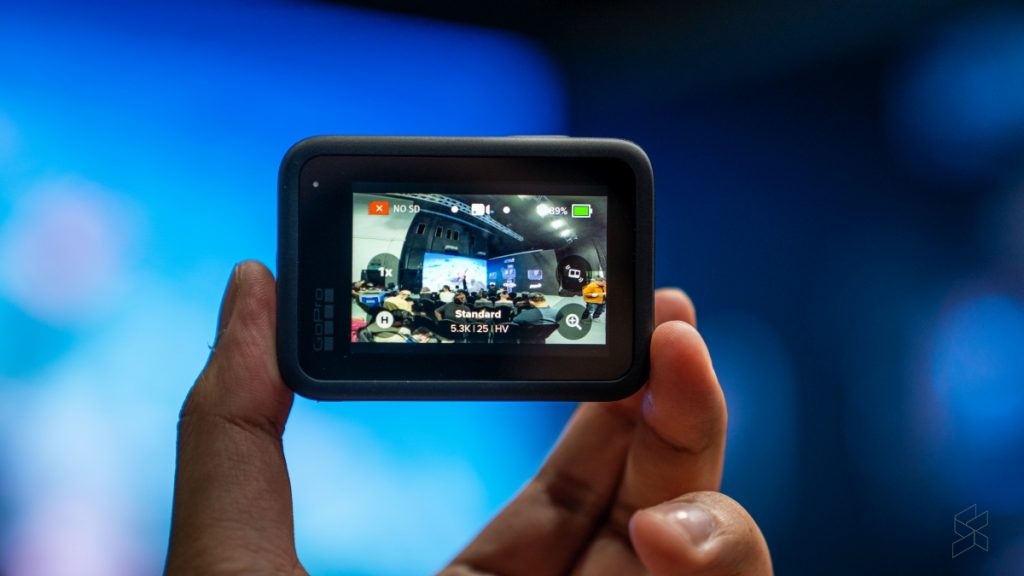
This makes any subjects or items you place in the periphery completely distorted. Of course, if you’re going to be shooting POV driving shots or something where the peripheral is just to fill in the experience, this shouldn’t be a problem, but it’s definitely not going to be good for group selfies.
While I was the most excited about the new sensor and aspect ratio, there are a couple of other quality of life improvements GoPro has introduced with this new camera.
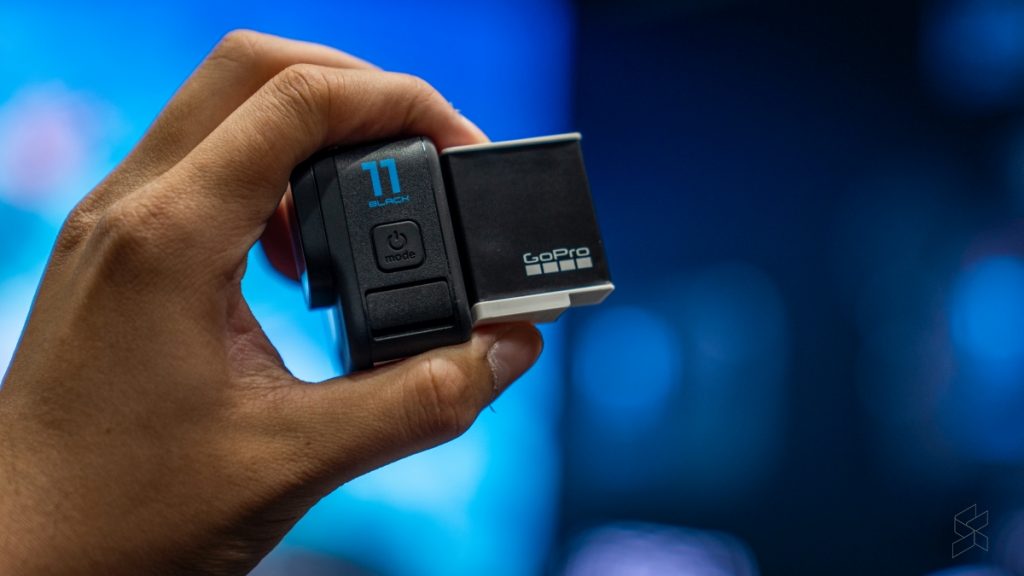
The new white Enduro battery which comes standard with all Hero 11 cameras, for example. It will apparently last up to 38% longer than the standard battery, and be more resistant to extreme temperatures to boot. Though, my favourite thing about this battery is that it’s cross-compatible with the Hero 10 and Hero 9 cameras too.
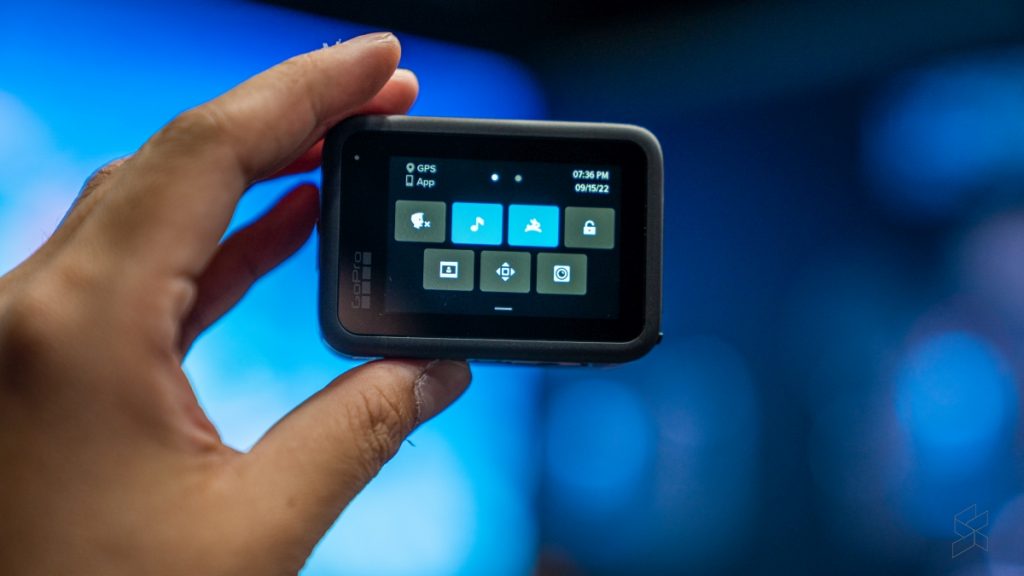
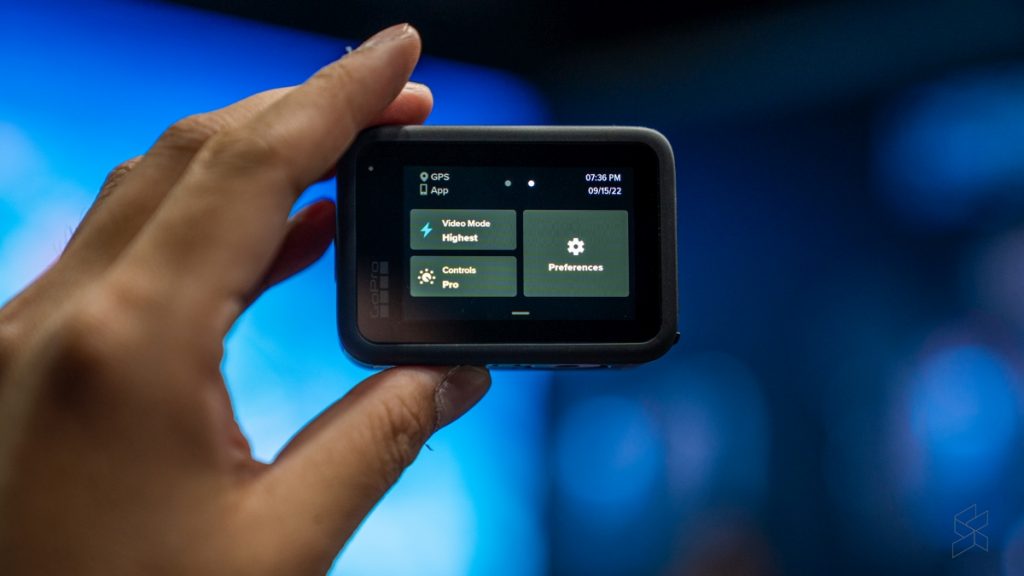

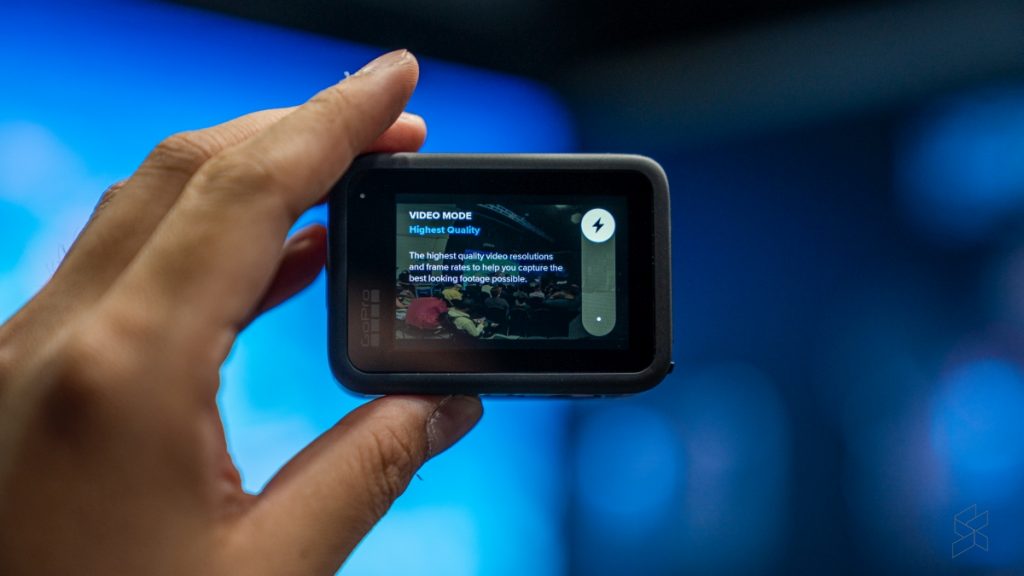
GoPro also introduced a new user interface design. It takes a more square design to the buttons and toggles, and even lets you quickly switch between performance modes and an “easy” settings function. This easy mode is basically for baby’s first GoPro where you can cycle between a couple of preset settings without the ability to individually tweak framerate or resolution, for example.
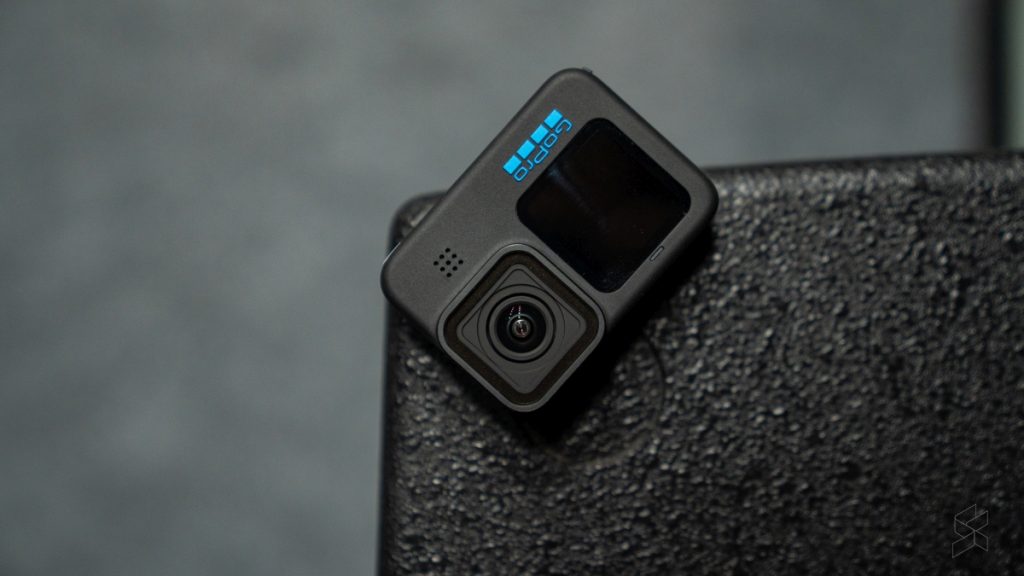
There were also a handful of other features like light trails, star trails and light painting that I think we weren’t really in the right kind of setting to test. I was honestly expecting something outdoorsy or more exciting than a bear painting workshop for a GoPro event.
If, however, you are one of those people who enjoy the idea of using 360-degree Horizon Lock and Levelling but don’t want to buy the Max Lens mod, the Hero 11 can now do it by itself. It is a little bit more narrow than if you had the Max Lens mod, but it definitely works.
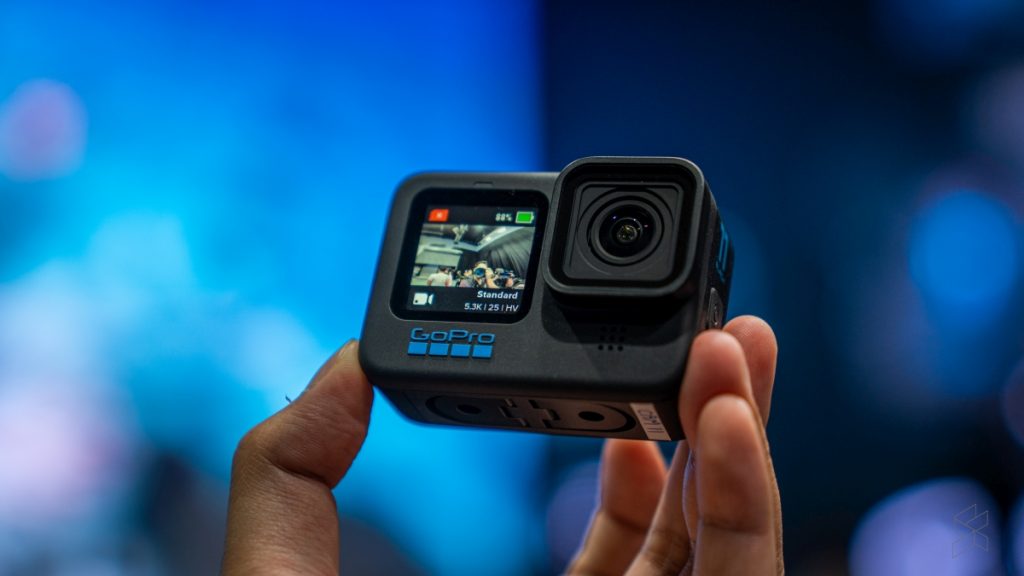
There are two cameras that GoPro launched as part of the Hero 11 series. The star of the show is the Hero 11 Black which is priced at RM2,399 and it’s available now. You can also pick this camera up as part of a Creator Bundle for RM3,399. This includes the Volta battery grip, Media Mod and an LED light.
Then, there’s the Hero 11 Mini, but I wasn’t able to get my hands on that. This is basically a smaller version of the Hero 11 Black but with all the features and none of the displays. I was surprised at how actually large it was especially since it’s supposed to be the spiritual successor to the Hero Session.
This camera will be available in Malaysia from the 25th of October 2022 and will be priced at RM1,979.

